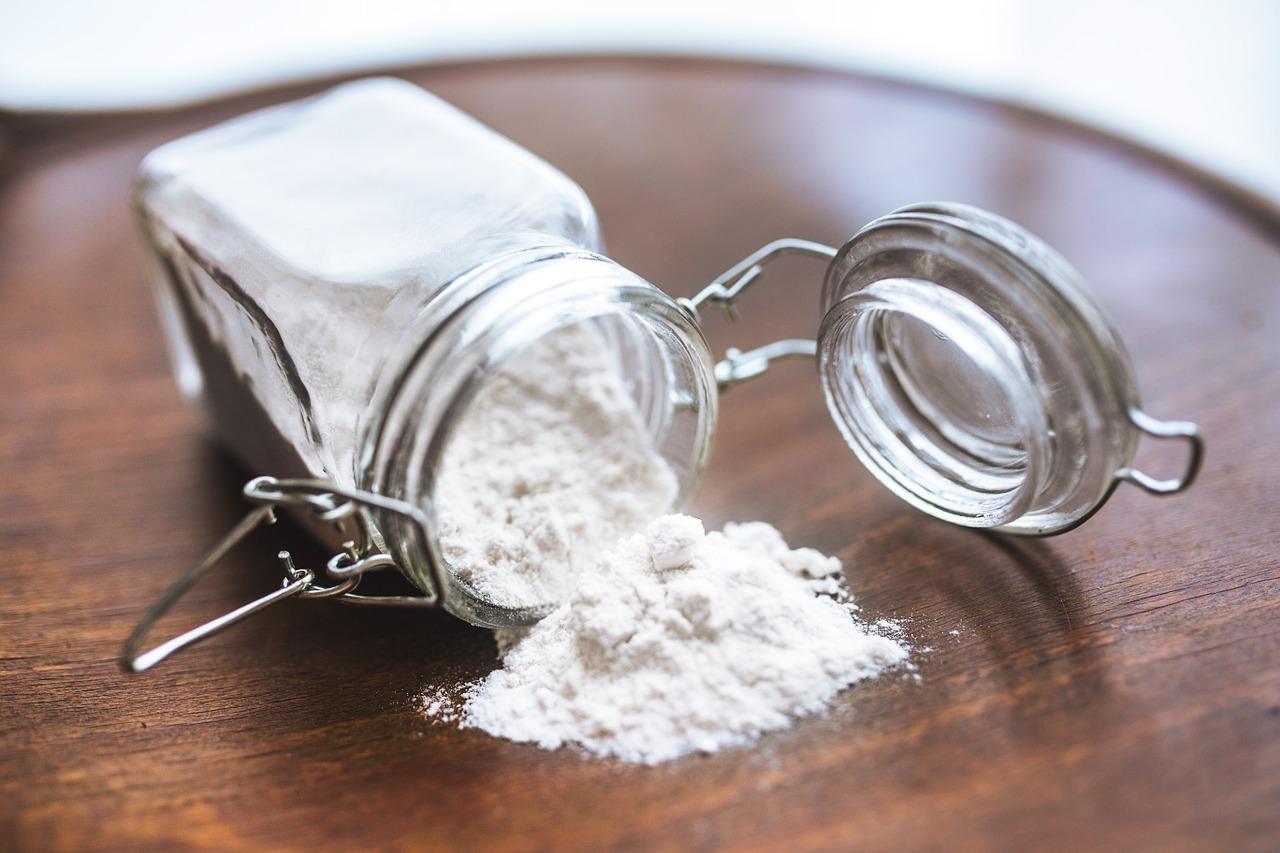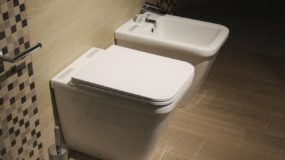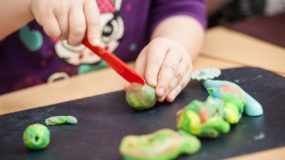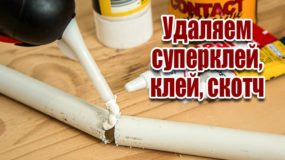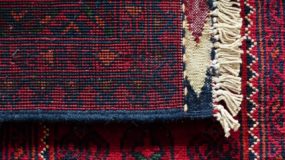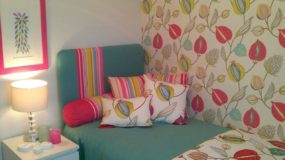In the article I will tell you how to make a paste from water and flour at home. Surely the material will be useful, because each person sometimes has to make repairs in the apartment.
The stores have a huge assortment of finishing materials, including wallpapers of various types and textures. Naturally, for each species requires the appropriate glue. It is not difficult to purchase a special adhesive, but various toxins are often part of factory glue.
Any family wants to live in a healthy apartment. Therefore, we will learn how to make a paste. This product is completely safe because it is based on natural ingredients. This product is prepared on the basis of wheat flour or starch. In addition to safety and cheapness, a home-made paste is more practical and easy to use.
Classic flour paste
If over time you decide to refresh the interior of the home, you will have to remove the old wallpaper. It is easy to do if they are glued to a paste. It is enough to moisten the walls with water, and the wallpaper will easily move away. On the surface of the walls there will be no roughness and unevenness.
For cooking, take 6 liters of water and a two-liter jar of flour.
- Pour six liters of water into volumetric enameled dishes, put on gas and boil. Pour flour into boiling water, slowly stirring the mass. Take a two-liter jar of flour for 6 liters of liquid.
- The consistency of the solution should be homogeneous, and in terms of density, a high-quality paste resembles a batter. Cool the prepared mass and pass through cheesecloth. After that, it is ready for use.
To make a high-quality paste made of water and flour, add some pre-heated wood glue to the composition. Just remember, the substance can leave yellow spots on the wallpaper. Use it when pasting walls with high-quality dense wall-paper.
Smear the walls with hot paste, and for spreading the wallpaper with chilled paste. The shelf life of a homemade adhesive is one day.
Wallpaper pasted with a paste will hold securely. If you want to protect housing from fleas, bedbugs, moth and other insects, add a little karbofos to the composition.
How to make a paste from flour for papier-mâché
Needlework is a stylish, fashionable and environmentally friendly activity. If you have imagination and obsolete paper, organize a real papier-mâché factory at home. Newspapers, notebooks and even toilet paper are great for this purpose.
Any creative process requires perseverance and a step-by-step action plan. First, prepare the material. Tear newspapers and other paper into small pieces. All family members can participate in this process. Teamwork unites. During work, you can listen to music or watch movies.
Having prepared the required amount of material, switch to the manufacture of glue. You will need wheat flour and wood glue, which gives an acceptable viscosity and quick hardening.
- Making a paste at home resembles custard cooking. Pour two glasses of water into a small bowl, bring to a boil and gradually introduce the flour, stirring with a fork. Two hundred grams of flour is enough.
- To prevent lumps, glue on low heat. After the mass, strain and combine with four tablespoons of wood glue.
- Leave the paste for two to three hours to cool completely.
This type of paste is used everywhere if papier-mâché is made on the basis of form.
Thanks to home-based adhesive, you can easily create wonderful toys at home that, after drying and painting with acrylic or paints, will take their rightful place on one of the shelves and will become a wonderful decoration of the interior.
It often takes several days to make one toy. To avoid having to re-make the paste, store it in the refrigerator. In conditions of low temperature, it will retain quality for several days, and then it will become moldy and lose its stickiness.
The right paste from flour for wallpaper
During repair in the apartment many for wall decoration use wallpaper and regular glue, which is sold in hardware stores. However, a home-made paste made of water and flour does not lose popularity.
Previously, people covered the walls of houses with a layer of oil paint or primed with drying oil. Purchased adhesive diffuses poorly with this type of surface. Therefore, you will need a substance that can work normally under such conditions, for example, flour paste.
Do-it-yourself paste paste has only one drawback - poor moisture resistance, which is eliminated with the help of additives. The list of advantages of the composition is presented by the convenience in work and ease of removing wallpaper.
Traditionally, flour and wood glue are used for cooking, which provides excellent contact with almost all types of surfaces. These ingredients will replace starch and PVA glue. The result of this will not worsen.
- After sifting, add a little water to the flour and mix, crushing the lumps. If cheap flour is not found, take potato or corn starch.
- Cook the resulting composition. Pour boiling water into the solution with a thin stream until the volume of the mixture is equal to one liter. If the paste turns out to be very thick, increase the amount of water.
- In order for the adhesive to work on painted surfaces, add some wood glue. Cook the mixture over low heat until tiny bubbles appear on the surface.
- At the end of cooking, strain thoroughly to get rid of lumps. When the composition has cooled, remove the film that has appeared during cooling from the surface.
Make a paste for wallpaper before use, as adhesive qualities appear at a temperature of forty degrees. Keep home glue in a cool place, in the heat it loses its characteristics.
To increase the shelf life, add a little carbolic acid to a homemade paste. Twenty five grams of the substance are taken per ten liters of adhesive.
Video instruction
Now there is a great opportunity to save on the purchase of glue. If there are no problems with finances, buy factory adhesive and put flour on cooking pancakes.
How to make starch paste for wallpaper
Contrary to the wide range of adhesives offered by building materials stores, starch paste is still widely used for priming walls, creating paper applications, insulating windows and wall-wrapping.
The main advantage of homemade starch paste is transparency. The composition does not leave marks and stains even on delicate paper. If the paper glued with this product has to be removed, this can easily be done with warm water.
- First prepare the starch. Thoroughly sift, which will minimize the likelihood of lumps. Pour the prepared raw materials with warm water and mix. The result is a mass resembling batter.
- I will introduce water into a starch slurry in a thin and continuous stream. For this purpose, I recommend using kettle. Mix the mixture thoroughly until a homogeneous mass is obtained. Stir vigorously using a long stick, breaking all the lumps. After brewing, the paste becomes transparent. When cooled, it becomes more dense.
- Strain the hot mass gently. A sieve or colander covered with gauze is ideal for this purpose. No lumps should remain in the finished adhesive. Otherwise, the result of further work will turn out unsatisfactory.
- The paste is characterized by poor resistance to moisture. To increase the adhesive ability, include industrial additives in the composition. A glass of wood glue is enough for the bucket of the mixture.
Cope with the task, if you correctly calculate the amount of raw materials. Remember, boiling water or powder cannot be added to the finished mixture. Since the adhesive ability of the product decreases rapidly, do not stock up.
The prepared mixture is suitable for priming walls painted with oil paint. True, in this case it is not worth using industrial additives, since the enriched composition will leave contamination on paper. If problematic facial skin is tormented, try so that the composition with additives does not get on it.
To buy wallpaper glue is not difficult. For any type of wall covering, there is a suitable mixture. However, sometimes there is no way to buy glue, and the work needs to be urgently finished. There is only one way out of the situation - self-preparation of the paste. I shared the technologies, instructions and step-by-step recipes from flour and starch. Now I highlight six main advantages of home squads.
- Low cost.
- Even thin wallpapers do not get wet from the mixture. Low probability of damage during gluing.
- Excellent adhesion of the paste to various surfaces.
- After drying the home-made glue, no spots appear and no traces remain.
- The hardened composition is durable.
- Simple dismantling of wallpaper.
I hope that in the process of reading the material you discovered something new, useful and interesting. See you!

